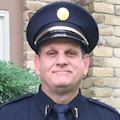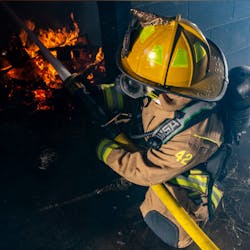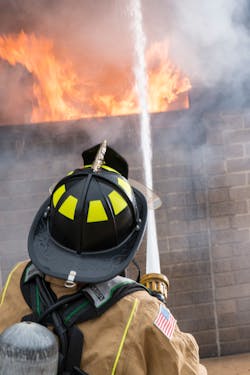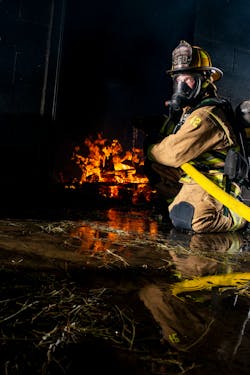Why are you looking for a new/different helmet, and what’s your needs assessment? Are you going to replace through attrition or purchase a new helmet for everyone? (Typically, helmets are replaced through attrition.)
Regardless of how big or small your department is, form a committee. Maybe a PPE committee already is in place. Even so, you need people in your department who will become your experts in firefighting helmets. Knowledge is power, particularly when you deal with salespeople and manufacturer representatives. How do you get the knowledge? It’s out there for sure, including, but not limited to, the internet, YouTube, other fire departments, associations, unions, testing and certification organizations, and even the manufacturers themselves.
Schedule a day when manufacturers can come to your location to show you what they have. Now, some firefighters believe that, because of the relatively small size of their department, manufacturers won’t come to them. If this is the case, band together with neighboring departments or state organizations and set up a larger manufacturer presentation day. A single department that requires 10 or 20 helmets might not get anyone’s attention, but, say, five fire departments that require 50 or more helmets total—or a state or regional “presentation day”—will get manufacturers thinking.
Fit and functionality
Obviously, helmets can be different. Materials can be leather or molded composite. The discussion regarding leather or composite might be rooted in style, tradition and longevity, but cost, weight and durability are important considerations, too. The design can be traditional, modern or jet-style, and the finish can be matte or glossy.
- Eye protection can come in the form of a four-inch curved design, NFPA flip downs, a retractable visor system or goggles. (Not all helmets come with all eye and/or face shields.)
- A chin strap can be of the two- or four-point configuration.
- Soft goods can be garnered in removable/detachable types. Impact caps can be incorporated for thermal (versus just the shell) and/or impact (versus suspension) protection.
- Fit can be specified in consideration of comfort, balance, coverage, ergonomics and/or weight. The jet-style helmet continues to be evaluated by firefighters in the United States, but adoption has been slow, with many departments deciding to stay with traditional-style helmets.
- Consideration of U.S.-made helmets should be rooted in the reliability of the supply chain and of customer service.
Note: Regardless of what you hear or read, all NFPA 1971 helmets must meet the same testing certification requirements.
You can evaluate the fit, but the helmet should be worn over a period of time, which probably will depend on the time that you’re afforded based on how quickly that you must recommend or select. The helmet should be evaluated in full PPE, including SCBA and on air with hood in place, and in nonfire uses, such as extrications, in full PPE. That will give you a look at how the helmet interfaces and moves with the ensemble in a physical evolution. You can simulate operational use with physical evolutions in a static environment, which assists in a side-by-side evaluation.
If you have access to a burn building, you can evaluate the thermal protection and movement in a “simulated” fire evolution. The adage, “Practice like you play,” applies here. Subject each helmet to the same conditions and movements that you would experience on the fireground and during an extrication. Climb an aerial ladder. Pull a ceiling with pike poles. Lay out an attack line to a front door and move that line through a building or up stairs. Use the spreaders or cutters on a junk automobile.
Specific details
Consider what follows as a way to formalize your request to manufacturers and to clearly explain your expectations.
“The (Name) Fire Department has approximately (number) personnel who use firefighting PPE. In the interest of investigating new helmet technologies, innovative design, and enhanced or updated products, and for the purpose of establishing a new structural firefighting helmet specification, (Name) Fire Department’s firefighting PPE committee will conduct evaluations for structural firefighting helmets.
The evaluation for structural firefighting helmets is planned to begin no later than (date), to properly assess all aspects of a helmet: protection, fit, function and durability.
All manufacturers that produce their products in the (United States, North America, etc.) are invited to participate. The following parameters will apply to all products and all participants, and a minimum of (number) helmets of the (traditional/modern/jet) style shall be submitted:
- Of the (number) helmets that are submitted, (number) must be (color) and (number) must be (color).
- Helmets that are submitted must have impact-cap technology.
- Of the (number) helmets that are submitted, a minimum of (number) must follow our department’s face-shield specification. If desired, the other (number) may include a different NFPA-certified face shield.
- Of the (number) helmets that are submitted, one that’s picked randomly must be used for destructive testing and examination internally by (Name) Fire Department.
- All products must meet all of the current requirements of the NFPA 1971: Standard on Protective Ensemble for Structural Fire Fighting and Proximity Fire Fighting.
- Participating manufacturers will ensure that correct sizing and fit is provided for each evaluator who wears their product.
- Participating manufacturers must ensure that training is provided to meet any applicable aspects of the current issue of NFPA 1851: Standard on Selection, Care, and Maintenance of Protective Ensembles for Structural Fire Fighting and Proximity Fire Fighting, including, but not limited to, the published helmet-inspection protocol.
- (Name) Fire Department requires protective ear flaps, chin straps and internal soft goods that are able to be removed, as specified in NFPA 1971, and that they are able to be laundered and replaced in a user-friendly fashion without tools.
- The same helmet material that currently is specified is preferred, unless otherwise allowed by (Name) Fire Department. The committee will review and might accept into the evaluation alternative materials or technology at its discretion.
- Before being accepted to participate in the evaluation process, helmet manufacturers must provide a letter from a certified third-party testing laboratory that states that the model of their product was tested and that it meets the requirements that are set forth in NFPA 1971.
- The NFPA-compliant label must stay attached and be legible for the usable life of the helmet.
- Any style, design concept and innovation that already is included as part of the current (Name) Fire Department specification takes precedent in construction of the helmets that are submitted unless an approved equal or alternative is allowed by (Name) Fire Department.
- All helmets that are submitted and accepted for evaluation become the property of the (Name) Fire Department at no cost or expense to (Name) Fire Department.”
As well: Incorporate automatic discounts for late deliveries into the specification process. Rather than liquidated damages that go through a bureaucratic process, if your contract stipulates 30-day delivery, then Day 31–45 is an automatic 10 percent discount off of the purchase-order price; Day 46–60 is another 15 percent off of the purchase-order price, etc.
Bottom line: protection
The firefighting helmet isn’t a billboard for experience nor a badge of courage. It’s one of the more important aspects of the firefighter protective ensemble. It protects the area that generates critical thinking and physiological actions by protecting the firefighter’s head from fire and falling objects. However, it also keeps water and embers from going down the neck behind the firefighter’s turnout coat collar as well as provides limited face and eye protection. All of the factors must be considered in selecting a helmet.
About the Author



